Bargin Boats to Sail Now
Great design, build quality and good availability make for good buys to open the door to sailboat ownership
Beware the cheap boat. A deal that seems too good to be true probably is. But there are boats that can be excellent bargains if you know what to look for.
Boat shopping often starts with a dream boat that may end up outside the price range, difficult to find, have operating expenses a buyer is unwilling to take on or may require more work than a buyer is interested in. When the dream boat becomes unreachable, it’s time to think about the characteristics that you want in a boat, rather than the specific model. And once you’ve identified what’s important, the odds are there’s an older model boat with a reliable record and good availability that can fit the bill at a reasonable price.
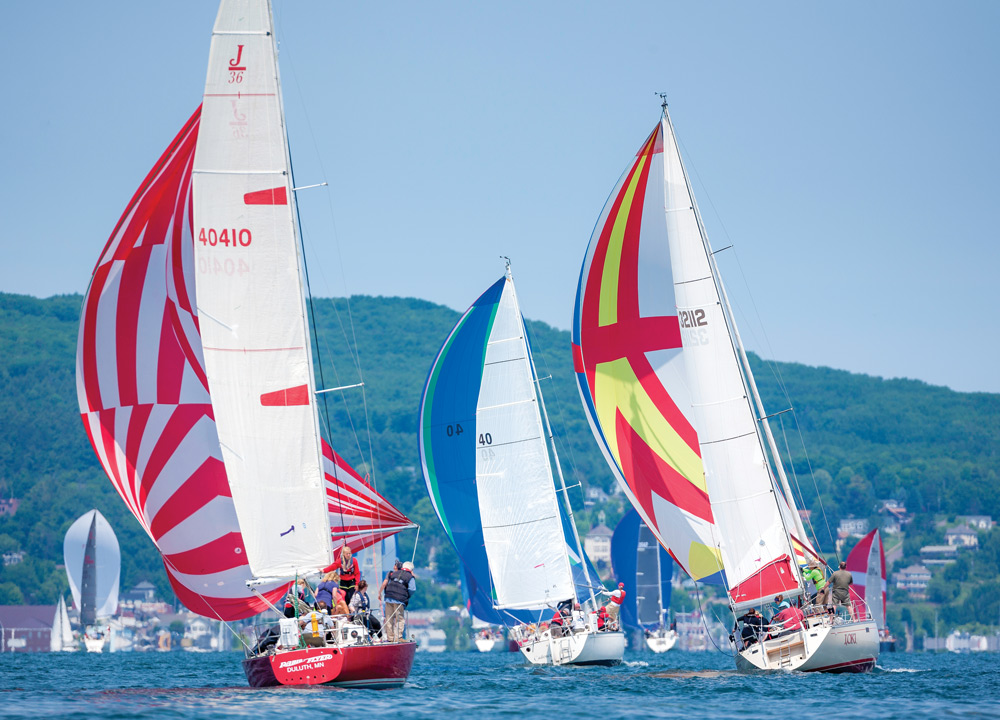
Most older model boats will need a bit of work, but look for boats with jobs that can be DIY’d, affordably completed by a professional, or problems that can be addressed down the line as time and funds allow. When you’re ready to make an offer, a pre-purchase survey is a good idea. Most insurance companies require a survey from an accredited marine surveyor, so the survey will be needed down the road regardless. Better to have it done before finalizing a deal to purchase rather than after you’ve already bought the boat.
There are some models that stand the test of time better than others, and they have a few qualities in common. Good to excellent original build quality is of course of utmost importance, but there are more specific compelling qualities some of our budget boat picks tend to have. For instance, if you’re looking to dip your toe into club racing without a grand prix budget, some of our picks, like the Olson 30, have favorable ratings and tend to perform well in mixed fleets. Others are well suited to one-design fleets, where the action is fun, and the class often has rules designed to keep the boat affordable and avoid “arms races” with large inventories of expensive, high-tech sails. Boats that excel on the race course are often in better shape as previous owners have kept up on maintenance and regular upgrades.
Coastal cruising sailors have many good older model boats to look for, and many can double up as fun club racers as well. For offshore cruising, or cruising with a crowd, a premium is placed on build quality as it relates to seaworthiness.
One important factor that the boats on our list share is generally good inventory, which helps keep the price reasonable. And since these boats have stood the test of time, the odds are good that there will be a market for the boat when you’re ready to sell.
Rhodes 19
The Rhodes 19 remains an affordable one-design racer with active fleets across the United States, particularly in Massachusetts and Maine.
Designed by Philip Rhodes, it was launched in 1958, just as fiberglass was gaining favor as a boatbuilding material. George O’Day, a sailor from Marblehead, Massachusetts, was then importing molded wooden dinghies from England. He obtained Rhode’s permission to rename the design as the Rhodes 19 and quickly sold 50.
The 19-foot daysailer shared the same hull design as the 1962 Mariner 19. It was built by the O’Day Corp. and later by Stuart Marine, which purchased the molds in 1982. At last count, over 3,200 Rhodes 19s were built.
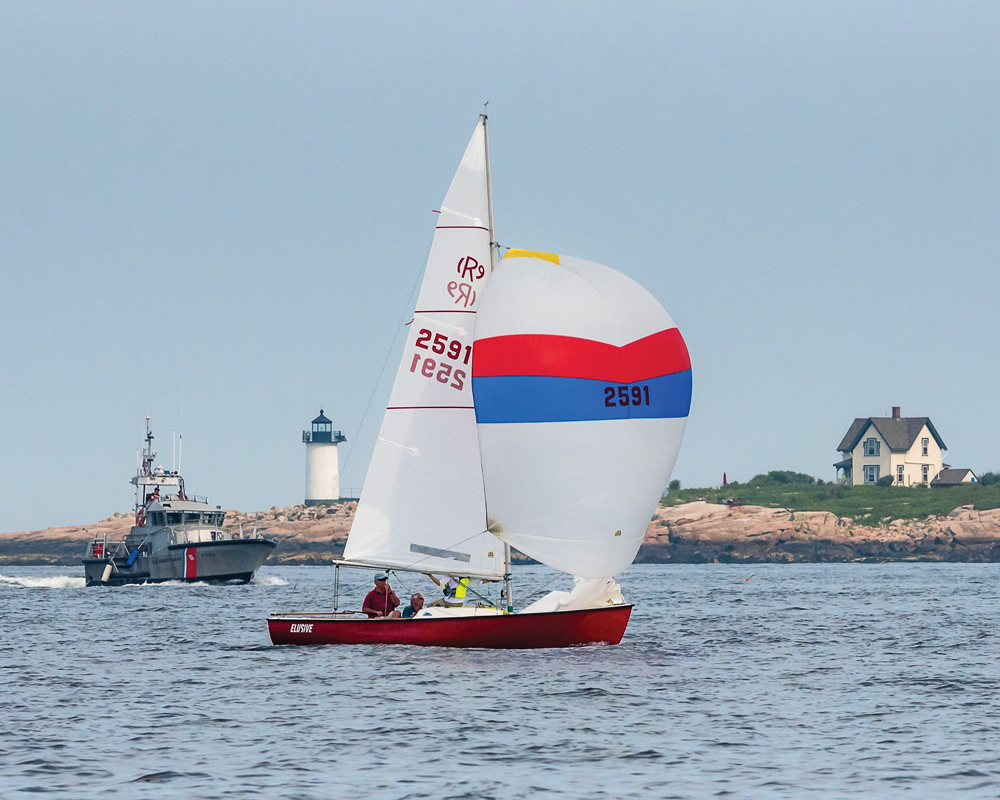
However, the boat has not been without recurrent problems. Owners recount having to replace weak cracked ribs with mahogany, reinforce wobbly side decks, repair spongy decks and install angle iron to support the deck. Others have added a stainless steel tabernacle just aft of the mast exit box.
Rudder wear is often a topic among Rhodes 19 owners because it must be shimmed approximately every three years. The boat’s wire-to-rope halyards can be rough on fingers so owners tend to switch to all-rope, low-stretch Dacron.
The centerboard may also benefit from upsizing. The boat can be found in both full keel and centerboard models, with the latter compatible with trailer transport.
The Rhodes 19 can be an ideal boat for those looking to make sailing a family sport and pastime without breaking the bank or requiring a horde of friends to line up as crew. The boat is typically raced with three people with an ideal crew weight of 425 pounds.
Boats currently for sale in the U.S. include one in Massachusetts for $11,000 and another in California for $18,000, but offers are often posted online at prices closer to $5,000 with some TLC required. An active one-design organization can be helpful to newcomers.
Olson 30
The Olson 30 is a popular club racer with excellent sailing capabilities, designed by George Olson of Santa Cruz, California, in 1978.
As the story goes, on a delivery trip of Bill Lee’s Merlin back from her record-breaking 1977 Transpac, Olson had a design brainstorm. He was on board with well-known sailors Dennis Bassano and Don Snyder, who reportedly lent their initials to the prototype’s name, the SOB 30.
The design was eventually christened Pacific High, and as a result of that experience, Olson, mostly a surfer and surfboard shaper, constructed a plug for a production boat. His thinking: reduce draft, increase freeboard and replace teak decks with fiberglass and rolled-on nonskid.
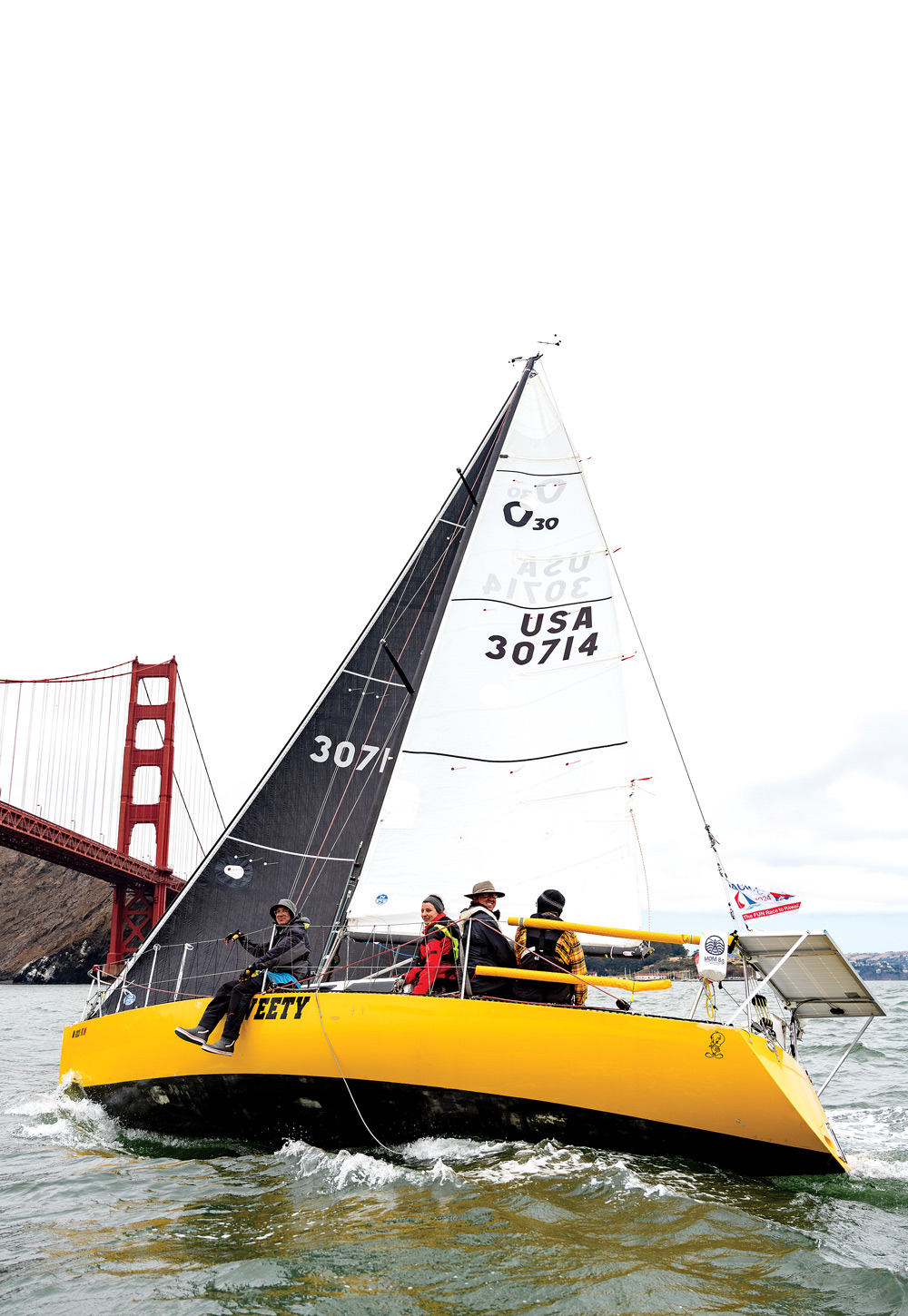
A 30-foot masthead sloop, it featured single-spreaders with aluminum spars. Though designed as an ultralight displacement boat, it was beamier than Ron Moore’s Moore 24 or Bill Lee’s Santa Cruz 27.
Construction by Pacific Boat Works was similar to other Santa Cruz boats with polyester resin, E-glass and an end-grain balsa core in the hull and deck. The keel was cast lead, the rudder a fiberglass-and-foam sandwich. Approximately 250 Olson 30s were built.
The Olson 30 originally raced as a MORC (Midget Ocean Racing Class) handicapped competitor but now competes in PHRF events with a rating that ranges from 90 to 114, according to the class, and the boats often end up at the top of the club standings. And the boats are also capable of offshore sailing, with the Olson 30 racing the biennial Bermuda 1-2 Race at least twice.
Based on performance reports, the lightweight Olson 30 has a relatively overpowered sail profile for its age and design. It excels in light-air sailing, but in moderate conditions is unremarkable. In heavy conditions upwind it suffers from the lack of weight needed to drive the bow and boat through waves. However, downwind in a breeze the Olson 30 surfs and planes readily, precisely the conditions for which it was designed.
Some Olson 30 owners have upgraded to a Ballenger double-spreader rig and installed an elliptical rudder to improve handling when steering in a downwind blow.
Olson 30s typically are offered for sale today from $10,000 to $16,000, occasionally higher.
Westsail 32
Some bargain boats are perfect for daysailing and club racing, but when serious offshore sailing is the goal, you’re probably looking for something a little meatier. The Westsail 32 has been turning heads since it was introduced in 1971, mostly because it looks like a rugged, oceangoing boat capable of sailing just about anywhere.
Designed by William Crealock and William Atkin, and first built over a half-century ago, it’s still in demand. At 32 feet long, the cutter with prominent bowsprit and hung rudder creates a distinctive profile, not unlike what a child might envision if asked to draw a sailboat.
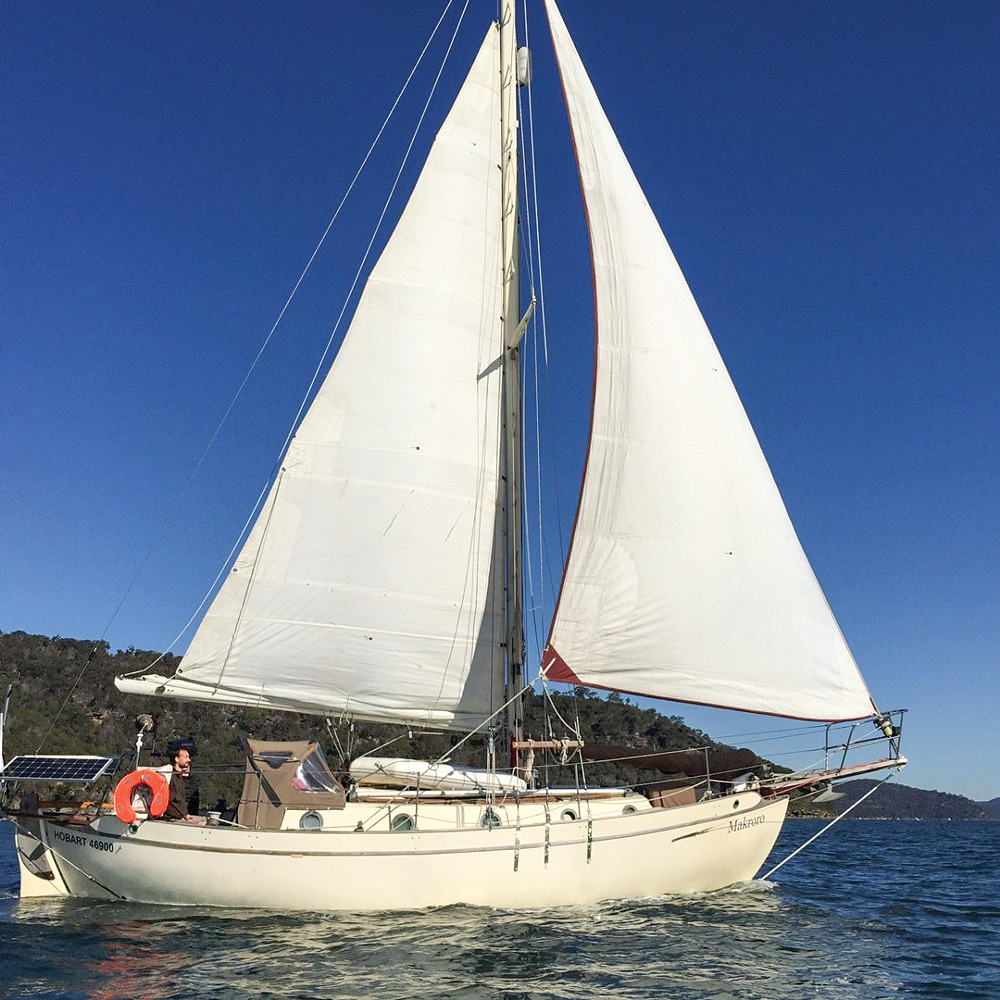
It’s obvious the boat is heavily built and over the years has attracted a large contingent of fans, many of whom have taken their W32s on wide-ranging global adventures. Although the boat is often equated with trouble-free voyages and successful circumnavigations, the Westsail 32 gets humorously poked for its robust construction.
“The W32 is the Humvee of any marina: old-fashioned lifeboat lines, high bulwarks, massively over-built, the look of indestructibility,” owner John Geisheker quipped during an interview in 2000. “Unfortunately, the resulting 10 tons must be lugged around for the boat’s life, a combination of armor plate and millstone.”
While the W32 may excel under sail offshore, the cost translates to awkward maneuvering in any confined space. As Geisheker explained, “She wields that long bowsprit like a weighted centerpunch. This is a boat meant to travel, rather than frolic in harbor or club race or dock.”
Given the kit construction of some W32s, careful shopping is called for, but there are bargain boats to be found, particularly when considering the relatively low cost of ownership compared to other, larger, offshore cruisers. Westsail 32s are currently for sale in California, Florida and New York, prices ranging from $25,000 to $55,000.
J/105
J/Boats founder Bob Johnstone has often noted with pride that “the J/105 revolutionized downwind sailing in the sport as the first boat over 20 feet with a retractable bowsprit and
asymmetric spinnaker.”
Designed by Rod Johnson, the scrappy, lightweight racer is the darling of competitive fleets from coast to coast.
Introduced in 1991 as a 34.5-foot fixed keel, one-design racing sailboat, it features a retractable bowsprit, which allows for a large asymmetrical spinnaker. The boat draws 6.5 feet.
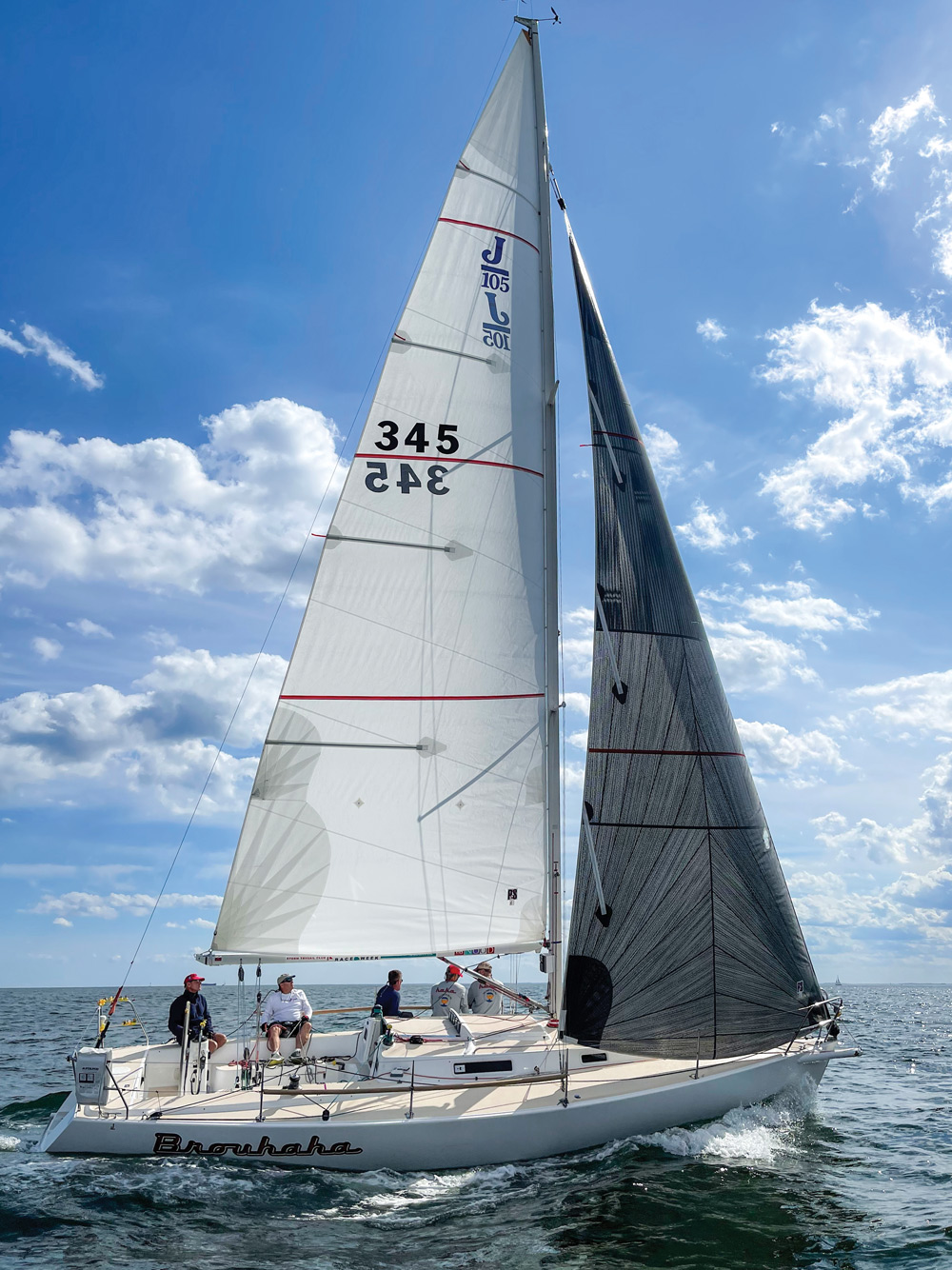
Approximately 700 J/105s have been built.
According to Bob Johnstone, the J/105 is ideal for sailing shorthanded while racing or while cruising with the dodger raised, sails furled and a swim ladder swung off the transom.
The J/105 today is the most successful one-design keelboat class over 30 feet in the United States.
The class association is an owner-managed organization with strict one-design rules for class events, a world-class website and oversight of the top J/105 racing events in the United States.
Ric Dexter, a winning skipper who sails his J/105 Brouhaha out of Marblehead, Massachusetts, has participated in more than 40 of these organized races since the season began in May. “There’s plenty more left,” he said in mid-summer. “The people who sail J/105s tend to be competitive, so it’s a lot of fun. And the fleets are from all over the place.”
J/105s are also well suited for community sailing programs training high school age sailors in keelboat and offshore racing. Many J/105s are currently for sale with prices ranging typically from $50,000 to $70,000. Compare that to the similarly sized, newer design of the J/109, which usually sells for
around $125,000.
Catalina 36 MkII
Frank Butler and Gerry Douglas designed the Catalina 36 cruiser, which splashed in 1982 to great fanfare. The boat was tremendously successful.
A 2012 review by naval architect Jack Hornor noted that with nearly 3,000 sold over its first 26 years, the Catalina 36 became arguably the most popular sailboat of this size ever built. It paved the way for an upgraded version, the Catalina 36 MkII.
The MkII was introduced in 1994 and produced until 2005. Builders used the same hull and rig as the Catalina 36, but created a larger cockpit, different cabin portlights, a walk-through transom and newer deck and interior designs.
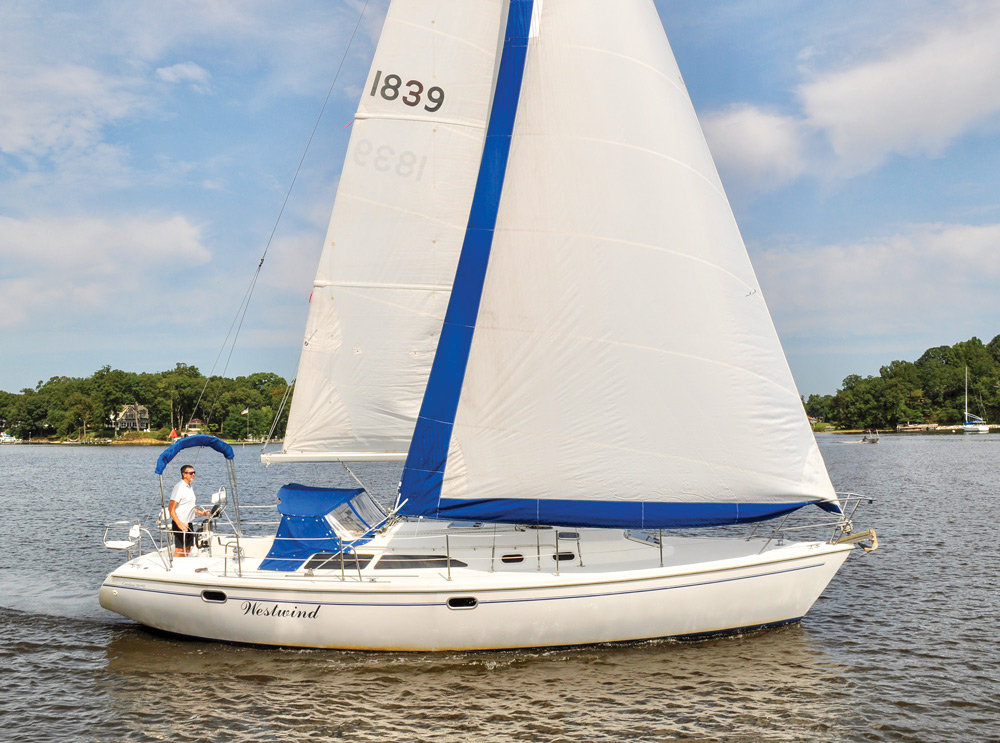
The MkII has a draft of 5.8 feet with the standard fin keel and 4.52 feet with the optional shoal-draft wing keel.
In a 2015, SAILING Magazine’s Bob Pingel wrote that the boat “hits a sweet spot among weekend cruisers. It’s big enough to be comfortable and capable, but small enough to easily manage if shorthanded and comes at an approachable price.”
Owners tend to praise the MkII, but don’t shy away from discussing its shortcomings, which can mostly be chalked up to unpleasant inconveniences rather than performance problems. The smelly holding tanks are frequently a focus.
“It’s a silly design that just plugs up eventually,” said one owner, explaining how the holding tank vents through a port stanchion. “I replaced mine with a mushroom through-hull below the rubrail, rerouted the vent hose, and filled the deck hole.”
The jam cleats for the mainsheet are also a point of contention. Some owners say the line keeps popping out when not on the cabin winch. Many owners swap out the jam cleats for more modern and efficient clutches.
Catalina 36 MkIIs are currently for sale in many states across the country, ranging in price from $74,000 to $124,000.
Beneteau 411
It’s difficult to find negative opinions about the Beneteau 411, and as production cruising boats go, it has a lot to offer, particularly for sailors looking for coastal cruising or seasonal jaunts in the Caribbean.
Launched in 1997 and produced until 2003, the Beneteau Oceanis 411 (the Oceanis name is used outside the U.S.) has found more homes around the globe than any other Beneteau, both in charter fleets and with private owners. Standing the test of time, it is still sought after on the secondhand market.
The Oceanis 411, a 41-foot masthead sloop with a fin-bulb keel and a spade rudder, has a long waterline and a tall, two-spreader rig that together create a handsome profile. A large cockpit and a 13-foot beam that offers a good amount of interior volume make this a spacious cruiser. The hull is made of laminated GRP with internal fiberglass ribs reinforced with unidirectional rovings. The deck, with bonded bulkheads, is a balsa sandwich for stiffness and insulation.
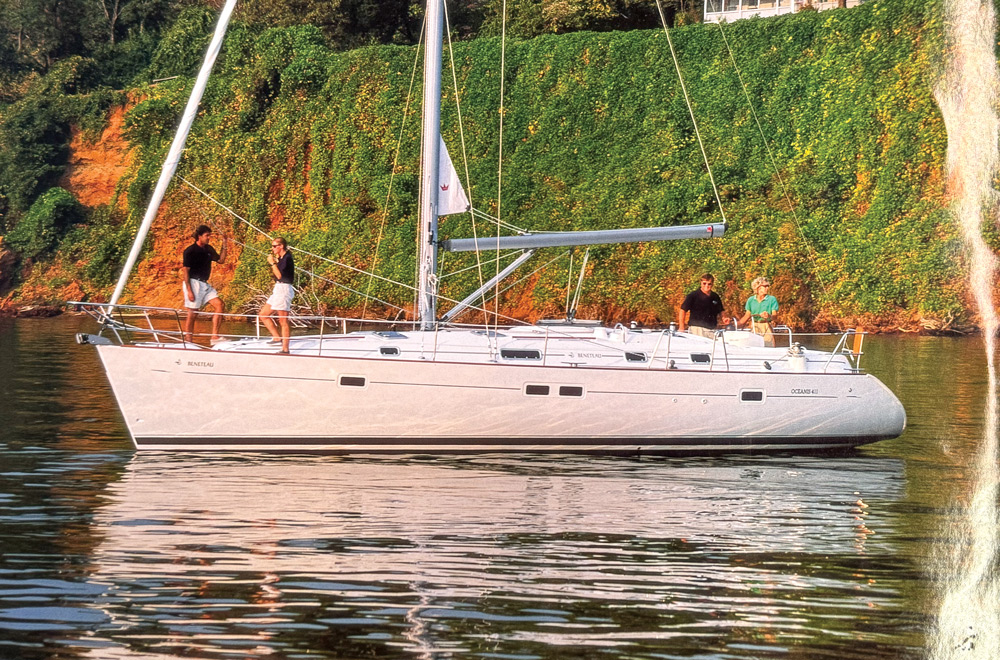
The two-cabin design on the owner’s model has a king-size berth in the aft cabin and this layout frees up space in the saloon. The three-cabin version popular in the charter trade has the galley along the port side of the saloon, a more linear design with a U-shaped dinette and central settee.
Boats that have been in charter will typically have high engine hours and are likely to show more wear and tear. General buying advice for the 411 includes inspecting the keel bolts for movement or leakage and close examination of the standing rigging, which may be nearing the age of replacement.
At least 13 Beneteau 411s are now on the market in the U.S. at prices between $64,000 in Virginia and $98,000 in Massachusetts.

Comments